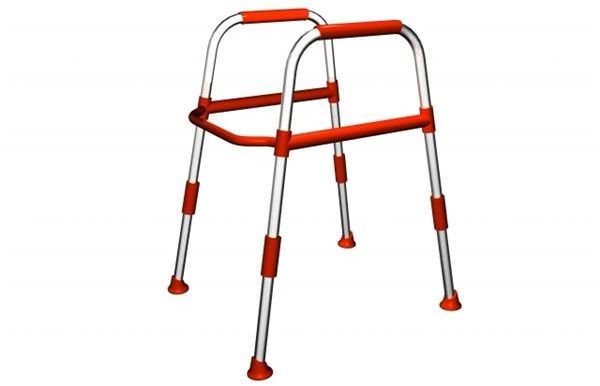Osteoarthritis of the Hip: Everything You Need to Know to Reduce Pain and Live More Comfortably
Arthritis that is located in the hip occurs when there is a loss of cartilage at the head of the thighbone and acetabulum. The acetabulum is the socket that is cup-shaped where the thighbone fits into that joint. That cartilage allows the bone to glide inside of the socket as a person moves. When there is no cartilage, the bone rubs against bone and causes pain, tenderness, swelling (inflammation) and limits a person’s ability to move freely.
There are two main types of osteoarthritis:
- Primary: this type of osteoarthritis is located in the hips, is more generalized, and affects the fingers, thumbs, spine, hips, and knees.
- Secondary: osteoarthritis that occurs after an injury or inflammation in the joint.
Now, let’s discuss what happens when someone has osteoarthritis of the hip.
Osteoarthritis of the Hip
When a patient has this form of osteoarthritis, she usually has problems walking. At first, the diagnosis for osteoarthritis may be difficult.
This is because the pain of osteoarthritis can be found in different locations. This pain may be found in the groin, thigh, buttocks, or knee. The pain be either stabbing and sharp or dull. The hip is often stiff.
Free Digital Photos/graur razvan ionut
Diagnosis of Arthritis of the Hip
To get a proper diagnosis, a doctor asks a patient to move his hips in various ways to see which motions are restricted or hurt. The doctor wants to know if the patient walks with a limp and if one or both hips are painful. He needs to know if any pain is experienced in any other joints. Laboratory studies and x-rays are taken to make a proper diagnosis. The x-rays show whether or not there is any thinning or erosion in the bones, and determine any joint space or fluid buildup. The laboratory studies show if there is a rheumatoid factor or other antibody present.
Symptoms of Osteoarthritis in the Hip
Joint pain is the classic sign of arthritis. The pain of osteoarthritis is usually worse in the morning and lessens with activity. However, any vigorous activity can cause the pain to increase and stiffness to occur. This pain may limit a person’s movements and make walking more difficult.
If you are experiencing any of these symptoms that could point to osteoarthritis of the hip, consult your doctor:
- Stiffness that occurs when are getting out of bed
- Joint stiffness after sitting for a long periods
- Hip joints that have pain, swelling, or tenderness
- A sound or feeling (crunching) of a bone rubbing against another bone
Non-surgical Treatments
Treatment depends on the diagnosis. Patients with an infection in the hip joints need medication or surgical draining. A non-surgical treatment provides relief without many side effects or complications.
To reduce the inflammation, an anti-inflammatory such as aspirin or ibuprofen may be given. Corticosteroids, which are potent anti-inflammatories, may be given by mouth, injections or topical creams. To prevent the disease’s progression, methotrexate and sulfasalazine may be prescribed.

Physical therapy and strengthening exercises increase a patient’s range of motion, which helps maintain muscle tone. Some patients benefit from assistive devices such as canes or walkers.
Free Digital Photos/jscreationzs
Surgical treatments
If the non-surgical treatments do not relieve the pain, then surgery is usually recommended. There are several factors that determine what type of surgery is needed, which include:
- Patient age
- Hip joint condition
- Type of arthritis
- Disease progression
The surgical treatments include:
- Total hip replacement to provide pain relief and improve motion. A total hip replacement is recommended for those with rheumatoid arthritis or ankylosing spondylitis.
- Bone grafts are helpful for those with systematic lupus erythematosus. It can help them build new bone cells to replace the ones that were affected by osteonecrosis.
While osteoarthritis in the hip is painful, it is treatable. With proper care and treatment, most patients enjoy a relatively pain free life and can continue activities that they enjoy.
References
Orthoinfo.aaos.org- Inflammatory Arthritis of the Hip- https://orthoinfo.aaos.org/topic.cfm?topic=a00396
Webmd.com- Hip Osteoarthritis- https://www.webmd.com/osteoarthritis/hip-osteoarthritis-degenerative-arthritis-hip
Cedars-Sinai.edu- Arthritis of the Hip- https://www.cedars-sinai.edu/Patients/Health-Conditions/Arthritis-of-the-Hip.aspx
